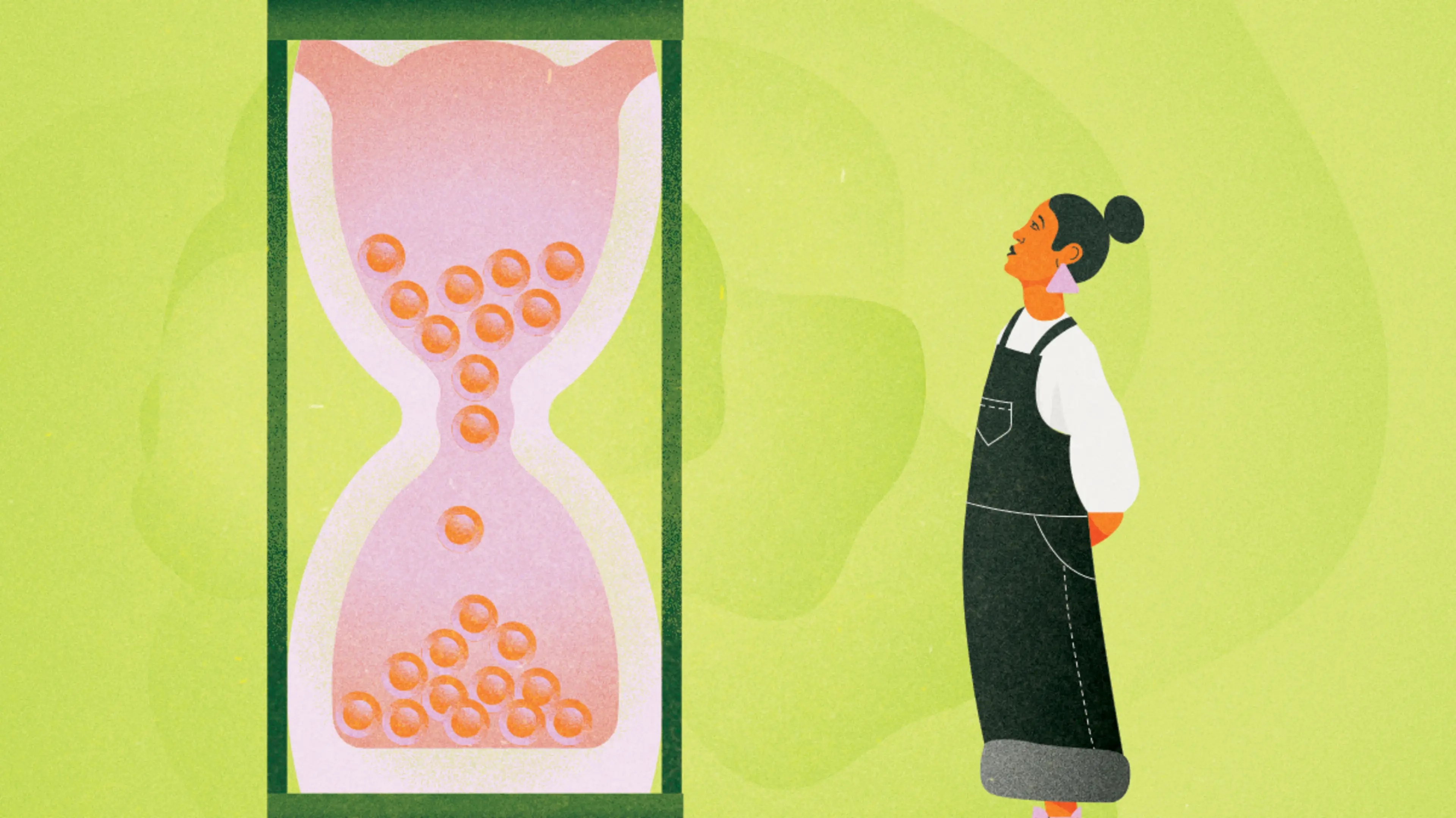While the two most common fertility treatments are both three-letter acronyms starting with “I,” they could not be more different. Both IUI (intrauterine insemination) and IVF (in-vitro fertilization) have the same desired result—a baby—but the similarities pretty much end there.
One involves weeks of preparation culminating in surgery, while the other is a simple 15-minute procedure, with 10 of those minutes devoted to lying down so the recently inserted sperm don’t have to fight gravity. One involves the precision of a lab and team of embryologists, while the other leaves a lot up to chance. And the kicker: one is successful at least twice as often as the other, though it’s also wildly more expensive.
Here, we’ll explore the differences between IUI vs. IVF to help you figure out which path might be the right one for you.
What’s Involved in the Procedure?
IUI:
IUI is a method of getting sperm directly into the uterus in order to fertilize an egg as it is released during ovulation. With IUI, your doctor will begin monitoring you as soon as your last period ends to make sure the procedure is timed just right. During ovulation, a doctor will insert a catheter through the cervix into the uterus and inject the sperm. This gives the sperm a leg up in their journey to finding the egg by shortening the distance they have to travel as well as bypassing the mucus barrier of the cervix, which kills a lot of sperm. Basically, IUI is a short-cut that puts the sperm and the egg in closer proximity and hopes for the best.
Note that this procedure is much more precise than any turkey baster method you might have seen in movies and it does require a medical professional. Although it is often performed at a fertility clinic, some ob-gyn offices can also do IUI.
IVF:
IVF, on the other hand, is a much longer and more involved procedure. It is a multi-step, multi-month process of ovarian stimulation, egg retrieval, and embryo transfer, with optional embryo testing.
The first step involves medication to grow lots of eggs followed by surgery to retrieve them. This is known as egg retrieval and is the same process that those freezing their eggs go through. But with IVF, you move on to the next steps of the process. Once the eggs are retrieved, they are fertilized in a lab where they go through several stages of growth. Not all eggs will survive this process to become embryos. Generally 3 or 5 days after fertilization begins, a viable embryo is chosen and transferred back into the uterus via a catheter.
IVF must be performed at a fertility clinic and it also involves an embryology lab, though the fertility clinic handles all interactions with the lab.
Am I a Good Candidate?
IUI:
IUI is often the first line of treatment for people younger than 35 whose cause of infertility is unknown, who are dealing with low sperm motility, who have cervical scarring, or who are using donor sperm.
IVF:
For some, IVF will be used after other methods have been unsuccessful, while others may be advised to move straight to IVF when they’re ready to have a baby.
This procedure is often the next step for those who have not been successful after multiple rounds of IUI. (How many rounds depends on you and your doctor, though it is common to move on to this more involved procedure after three attempts.)
IVF is often the first step for people with:
Fallopian tube damage or moderate to severe endometriosis
Diminished ovarian reserve due to age or otherwise
Moderate to severe sperm motility or low count issues
A medical need to do genetic testing (e.g. when both parents are carriers for a genetic disease)
A plan to use previously frozen eggs, donor eggs, or a surrogate carrier
To figure out which path is right for you, you will need to see a fertility doctor, otherwise known as a reproductive endocrinologist. (If you don’t know where to start, this guide to how to choose a clinic and a doctor can help.)
How Much Will Each Cost?
IUI:
Without insurance coverage, IUI is usually between $200 and $2,0001 per round, including necessary ultrasounds and the IUI procedure. There will be additional costs for sperm preparation and the medications sometimes required to prep your body.
IVF:
IVF costs can vary widely depending on which medications your doctor prescribes and the procedures performed, but expect to pay in the neighborhood of $15,000 to $30,0002 per round without insurance.
Keep in mind that some insurance plans might cover IVF but not IUI, and fertility coverage in general is still something of a white whale. So check your health insurance plan to determine what they will cover and under what circumstances.
What About the Medications—and Shots?
IUI:
IUI can be done unmedicated. However, doctors often prescribe Letrozole or Clomid, which are pills taken for five or so days to create better conditions for ovulation and to help your body potentially prepare more than one egg for ovulation to increase your chances of success. You may also need a shot to trigger ovulation.
IVF:
IVF involves so many medications. There’s medication to make you grow eggs, medication to keep you from ovulating, medication to make you ovulate, and medication to prepare your uterus for an embryo transfer, just to name a few. Most of your medications are shots (while the idea of self-injections causes anxiety for many, hopefully this process won’t be as bad as you’re imagining), with the option for some to be vaginal suppositories. Be prepared for IVF to be a bit demanding mentally, emotionally, and financially.
How Invasive Is Each Procedure?
IUI:
IUI feels no different from your annual exam. You might experience some discomfort, but it should be minimal, and you should be able to go about your day as normal afterward.
IVF:
IVF involves, well, surgery. Leading up to the surgery for egg retrieval, you will likely feel bloated and heavy (like your body is growing way more eggs than it’s used to—which is exactly what’s happening). After surgery you will likely be advised to take a pain reliever and relax for a few days. However, the embryo transfer should feel like your annual exam.
What About the Risks?
IUI:
While there is a teeny tiny risk of infection, for the most part IUI has basically no risk.
IVF:
IVF has quite a few side effects including nausea, mood swings, and soreness at the injection sites. While the egg retrieval procedure is relatively low-risk3 , there is the possibility of ovarian hyperstimulation syndrome (which can lead to blot clots and kidney failure in <1% of people), infection, or damage to the surrounding organs. The embryo transfer also carries a tiny risk of infection.
And Most Importantly—the Success Rates?
IUI:
Note that the results of each procedure vary widely depending on your situation. In general, IUI has a success rate of around 10% per cycle4 , although this drops after three rounds.
IVF:
IVF is a much more precise procedure that has a higher success rate than IUI. IVF birth rates5 per egg retrieval vary from 44% for those under 35 to 2.9% for those over 42. It’s also important to note that most people who undergo IVF have to do more than one egg retrieval (one study6 found that only 22% of patients were able to have two children with one egg retrieval).
What Else Should I Know?
Prerequisites: Sometimes, such as in the case of unexplained infertility, a few attempts at IUI are required to get insurance coverage for IVF, though this practice seems to be on its way out.
Genetic testing: As mentioned earlier, IVF provides the opportunity to test embryos for genetic defects whereas IUI does not. Patients can also use genetic testing to choose the sex of the embryo to transfer. The genetic testing is optional and usually an additional cost.
Multiples: You’re more likely to have twins (or more!) with medicated IUI7 and IVF8 , although it’s much less likely than it used to be with IVF, as doctors usually only transfer one embryo at a time. Weirdly, identical twins (caused by an embryo splitting) are between 2 and 12 times more likely with IVF9 —though that possibility is still less than 2%10 .
The Bottom Line
Despite the acronym similarity, IUI and IVF are quite different ways to pursue building a family. IUI is often recommended as a first step as it’s much less expensive and invasive, although that comes with a lower probability of success. IVF is more expensive, but it has a higher rate of success and provides more options, like using donor eggs or performing genetic testing. Although your doctor will make recommendations, the path you choose to go down is ultimately up to you. Good luck!










